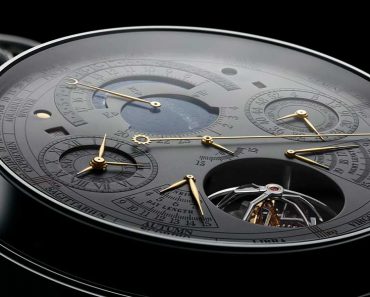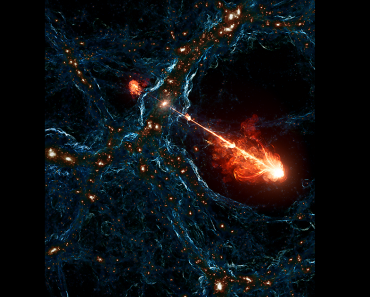Featuring 76 artists and collectives from 39 countries across 11 venues in Thailand’s capital city, the Bangkok Art Biennale highlights pressing global issues such as environmental stewardship, emphasising humanity’s responsibility toward Mother Earth. In addition to Gaia, the goddess of Earth in ancient Greek mythology, the biennale underscores that nature has long been associated with various goddesses, such as Prithvi (or Bhumi) in Hindu mythology and Phra Mae Thorani from the Buddhist mythology of Theravada in Southeast Asia.

‘Gaia’ may at first seem like an odd Eurocentric reference in Southeast Asia, but it is motivated by its consonance with the Thai word ‘kāyā’ (กายา), derived from Sanskrit and meaning ‘body’. Thus, the title Nurture Gaia in English can also be understood as ‘Healing the Body’ (รักษา กายา) in Thai. The Biennale is curated by Apinan Poshyananda, the chief executive and artistic director of the Bangkok Art Biennale since its inception in 2018, alongside a team of curators primarily based in Thailand—Pojai Akratanakul, Brian Curtin and Paramaporn Sirikulchayanont—along with Akiko Miki, the director of the Naoshima New Museum, which is set to open in Japan in 2025.

Juxtaposing ancient pieces with modern and contemporary works, the biennale continues its mission to contextualise contemporary art while exploring its roots and relevance. Since its first edition, the biennale’s venues have included three renowned Buddhist temples—Wat Pho, Wat Arun and Wat Prayoon—and this year, it adds Wat Bowon, along with the National Museum Bangkok and the National Gallery as additional new venues. These institutions help the biennale foster dialogue across the ages, offering an emphasis on feminine mythologies, echoing themes of motherhood and a matriarchal order.

The contemporary relevance of feminine mythologies
At the Bangkok Art and Culture Centre (BACC), Korean artist Choi Jeong Hwa (b. 1961) extends back to prehistory with a striking, curvaceous figure titled Golden Girl (2024). Suspended in the building’s atrium, the mobile work recalls the voluptuous form of the Venus of Willendorf, transmuted into a monumental, winged and floating version of the Palaeolithic fertility goddess.
The adjoining galleries feature sculptures by Louise Bourgeois (1911-2010) in collaboration with the Easton Foundation (New York), which has managed the artist’s estate since her death. Displayed in two spaces painted bright red, Janus in Leather Jacket (1968) hangs near a 15th-century stone yoni—a stylised female genital organ symbolising feminine energy in the Hindu tradition—alongside two 19th century bronze lingas from Thailand. These bronzes recall ‘palad khik’(ปลัดขิก), vernacular amulets shaped like phalluses that blend animistic fertility symbols with the Hindu representation of Shiva as lingam.

This dialogue with historical artefacts from the public collections of Thailand’s national museums contextualises the ambivalence of gender in Bourgeois’ work. The bronze sculptures Femme (Woman) (1960) and Nature Study (1984) presented in the next gallery, as well as Eyes (1995), a pair of breast-like bulging eyes in bronze exhibited in one of the gardens of Wat Pho temple, solidify these bold juxtapositions.
As Poshyananda points out, the Bourgeois’ presence in Thailand is part of a continuum. Before her passing, she gifted Hold Me Close (2005), a sculpture commemorating the victims of the December 2004 tsunami, to the country. Removed from its original site in Krabi province, a rehabilitation project for the work is now underway, supported by the French and American embassies, to be completed by the 20th anniversary of the disaster.
Busui Ajaw (b. 1986), already recognised at the most recent Thailand Biennale in Chiang Rai, brings a more vernacular dimension through her paintings. Drawing on her Akha origins, a nomadic ethnic group from the highlands of mainland Southeast Asia, the artist depicts (ancestral) vernacular deities, including Amamata, a polyandrous goddess flanked by seven husbands.

A matriarchal and matrilineal narrative is also suggested by Amanda Heng’s (b. 1951) photographs, which document her life alongside her mother as she ages from 1996 until her passing in 2023. The Singaporean artist introduces an intimate and emotionally charged perspective while challenging the male-centric and patriarchal traditions of her Chinese cultural descent.

Nearby are three life-sized, gold-gilded female nude sculptures by Ravinder Reddy, paying tribute to everyday women while breaking away from idealised beauty standards. At the National Museum, the artist extends his take on female goddesses with Parvati (2019), a blue head with a sophisticated hairdo, exhibited indoors, and Head/Devi (2009), a gilded bronze sculpture that is normally presented to the public in front of Bangkok’s Central Mall, and temporarily relocated to the museum’s garden for the biennale. These contemporary goddesses exude calm, confidence and courage, as if ready to take on the world. Also at the National Museum, works by Joseph Beuys (1921-1986), another trailblazer of the 20th century, reflects his pioneering interest in shamanism and animism. Displayed alongside Southeast Asian antiquities, his Urtiere (Primordial Creatures) (1958/1982) highlights the artist’s profound fascination with the interculturality of Eurasia.

An understated manifesto for ecofeminism
At the National Gallery, the narrative takes on a more explicitly activist tone. Deneth Piumakshi Veda Arachchige (b. 1980) addresses various forms of discrimination that women have historically faced and continue to encounter today, using ‘cheetha’ textile from her native Sri Lanka as a primary medium. In his Aravaani series, George K. (b. 1950) presents life-sized hyperrealist sculptures and paintings of transgender women from Tamil Nadu, drawing attention to underrepresented communities in art. Gender fluidity is also central to Guerreiro do Divino Amor’s (b. 1983) video work. The artist represented Switzerland at the 2024 Venice Biennale with a related installation centred on the Capitoline She-wolf, associated with the foundation of Rome and embodied in this work by Brazilian artist Ventura Profana (b. 1993). The artist’s works challenge Christianity’s legacy of upholding patriarchy and colonialism.
Blending mythology and feminism, Agnes Arellano’s (b. 1949) sculptural installation brings together four religious female figures from different civilisations, including Kali and Magdalene, as a female-only pantheon to heal the Earth. Interestingly, the biennale’s curatorial essay references the ‘Gaia hypothesis’ proposed in the 1970s by English scientist James Lovelock (1919-2022), postulating that the Earth functions as a self-regulating system akin to a superorganism. The concept was criticised by the scientific community for being untestable, though it still sheds new light on the spiritual personifications of nature and resonates with the ecological concerns that are central to the Filipino artist’s work.

The theme of tribute and healing Mother Nature is also key in Whitewash for Mother Earth (2024), a stunning abstract painting by Kanya Charoensupkul (b. 1947). Exhibited at the Queen Sirikit National Convention Center (QSNCC), it evokes an imaginary landscape, inheriting the spiritual and performative dimensions of Chinese traditional painting.
Performance, a central element of the biennale since its first edition, is featured at the BACC but on a reduced scale, both in the number of artists and the duration of the performance schedule. In Body Inside T-shirt (2024), Moe Satt (b. 1983) addresses political issues in military-ruled Myanmar, while Aleksandar Timotić (b. 1992), a protégé of Marina Abramović, invites visitors to sit with him at a table, peel potatoes and listen as he interrupts his task to sing in his powerful, high-pitched countertenor voice in Are You Hungry? (2023).

Ultimately, the biennale’s articulation of feminine mythologies with ecological concerns makes a thought-provoking statement. Regionally, it continues the legacy of Womanifesto, a biannual artist-initiated movement launched in 1995 in Thailand to rethink feminist and nation-centric narratives of art history. In this regard, some of the selected artists, such as Charoensupkul and Pim Sudhikan (b. 1973), have participated in the past. On a global scale, it resonates with the concept of ecofeminism, coined by Françoise d’Eaubonne (1920–2005) in her book Feminism or Death (1974). The French author and activist was the first to link the exploitation of nature and women, extending this connection to broader struggles for minority rights and the fight against patriarchy, colonialism and capitalism. Although understated, this ecofeminist orientation bolsters the biennale’s position as a significant voice in the international contemporary art scene.
(Disclaimer: The views and opinions expressed here are those of the author(s) and do not necessarily reflect the official position of STIR or its editors.)









